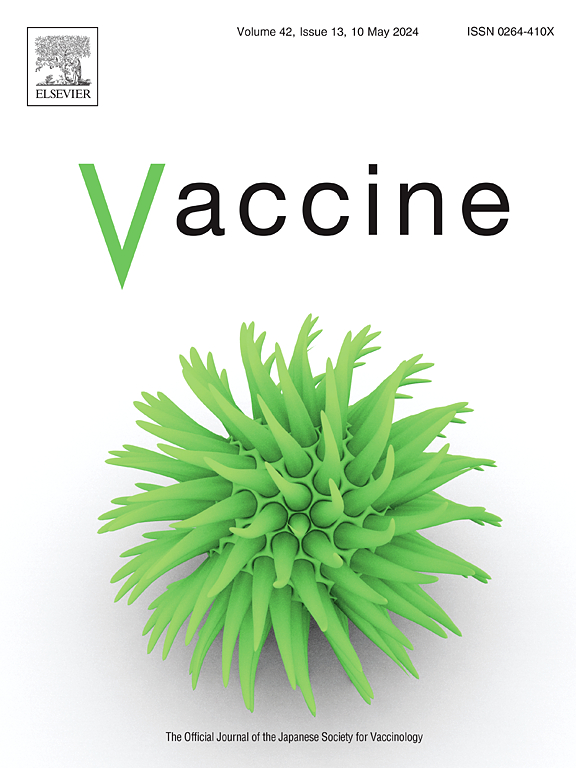Comparison of SARS-CoV-2 antibody responses following the second dose of BNT162b2 and mRNA-1273 vaccines in people living with HIV-1
IF 4.5
3区 医学
Q2 IMMUNOLOGY
引用次数: 0
Abstract
Background
People living with human immunodeficiency virus type 1 (PLWH) are at increased risk for severe outcomes following severe acute respiratory syndrome coronavirus 2 (SARS-CoV-2) infection. Although SARS-CoV-2 mRNA vaccines have demonstrated strong immunogenicity in general populations, comparative data regarding the humoral immune responses in PLWH remain limited. This study aimed to compare the humoral responses elicited by two widely used mRNA vaccines, BNT162b2 and mRNA-1273, in Japanese PLWH.
Methods
This observational study investigated 119 PLWH without prior SARS-CoV-2 infection who received two doses of BNT162b2 (n = 91) or mRNA-1273 (n = 28). Anti-SARS-CoV-2 spike antibody titers were measured at three time points: before vaccination and approximately 6 weeks and 24 weeks after the second vaccine dose. Factors associated with the antibody responses were analyzed by multivariate logistic regression.
Results
Both vaccines elicited robust antibody responses in PLWH, with the mRNA-1273 group having significantly higher antibody titers than the BNT162b2 group at 6 and 24 weeks (P < 0.0001). Receipt of mRNA-1273 was independently associated with antibody titers ≥4160 AU/mL at 6 weeks (adjusted odds ratio, 24.1; 95 % confidence interval, 6.26–161) and ≥ 1000 AU/mL at 24 weeks (adjusted odds ratio, 21.7; 95 % confidence interval, 6.72–85.5). Other factors associated with higher antibody titers included younger age, higher CD4+ T cell count, and absence of smoking history. Despite the differences in the antibody levels, no severe COVID-19 infections occurred during the follow-up period.
Conclusions
BNT162b2 and mRNA-1273 both induce effective humoral responses in PLWH, with mRNA-1273 producing significantly higher and more durable antibody titers. The present findings support vaccine selection strategies tailored to immunocompromised populations and highlight the need for continued monitoring and consideration of booster doses.
HIV-1感染者接种第二剂BNT162b2和mRNA-1273疫苗后SARS-CoV-2抗体反应的比较
感染人类免疫缺陷病毒1型(PLWH)的人在感染严重急性呼吸综合征冠状病毒2 (SARS-CoV-2)后出现严重后果的风险增加。尽管SARS-CoV-2 mRNA疫苗在一般人群中显示出很强的免疫原性,但关于PLWH体液免疫反应的比较数据仍然有限。本研究旨在比较两种广泛使用的mRNA疫苗BNT162b2和mRNA-1273在日本PLWH中引发的体液应答。方法对119例既往未感染SARS-CoV-2的PLWH患者进行观察性研究,这些患者接受了2剂BNT162b2 (n = 91)或mRNA-1273 (n = 28)。在三个时间点测量抗sars - cov -2刺突抗体滴度:接种疫苗前和第二次接种疫苗后约6周和24周。采用多元逻辑回归分析与抗体反应相关的因素。结果两种疫苗在PLWH中均引起了强大的抗体应答,mRNA-1273组在6周和24周时的抗体滴度显著高于BNT162b2组(P <;0.0001)。接受mRNA-1273与6周抗体滴度≥4160 AU/mL独立相关(校正优势比为24.1;95%可信区间,6.26-161)和≥1000 AU/mL(校正优势比,21.7;95%置信区间,6.72-85.5)。其他与较高抗体滴度相关的因素包括年龄较小、CD4+ T细胞计数较高和无吸烟史。尽管抗体水平存在差异,但在随访期间未发生严重的COVID-19感染。结论bnt162b2和mRNA-1273均可诱导PLWH有效的体液应答,其中mRNA-1273产生的抗体效价更高且更持久。目前的研究结果支持针对免疫功能低下人群的疫苗选择策略,并强调需要继续监测和考虑加强剂量。
本文章由计算机程序翻译,如有差异,请以英文原文为准。
求助全文
约1分钟内获得全文
求助全文
来源期刊

Vaccine
医学-免疫学
CiteScore
8.70
自引率
5.50%
发文量
992
审稿时长
131 days
期刊介绍:
Vaccine is unique in publishing the highest quality science across all disciplines relevant to the field of vaccinology - all original article submissions across basic and clinical research, vaccine manufacturing, history, public policy, behavioral science and ethics, social sciences, safety, and many other related areas are welcomed. The submission categories as given in the Guide for Authors indicate where we receive the most papers. Papers outside these major areas are also welcome and authors are encouraged to contact us with specific questions.
 求助内容:
求助内容: 应助结果提醒方式:
应助结果提醒方式:


